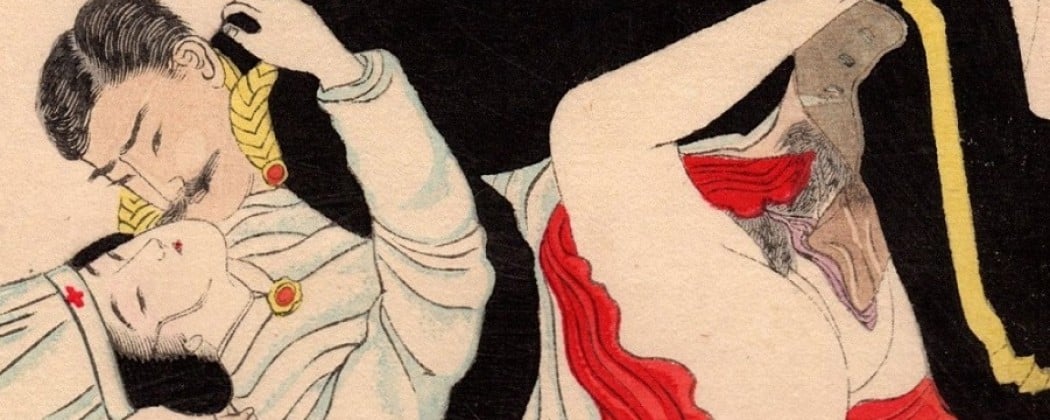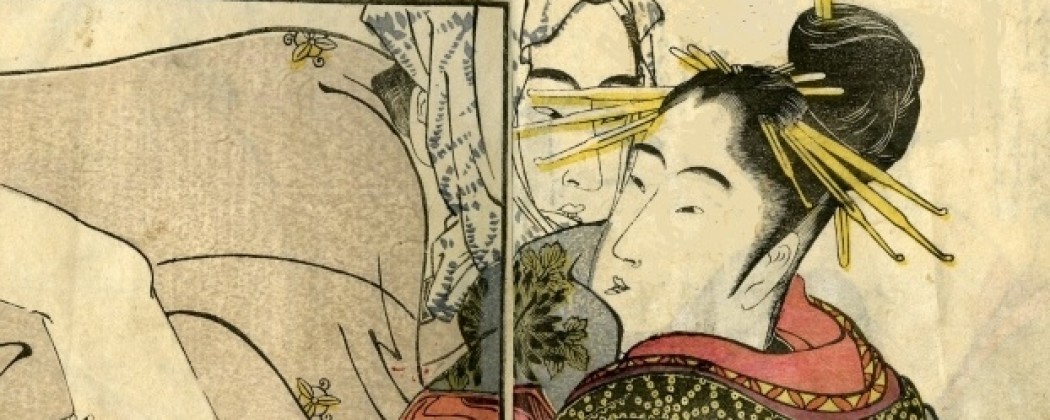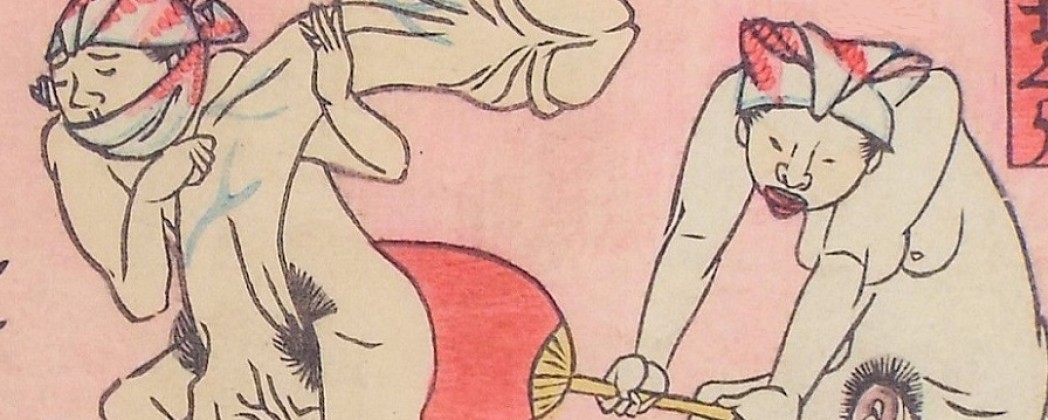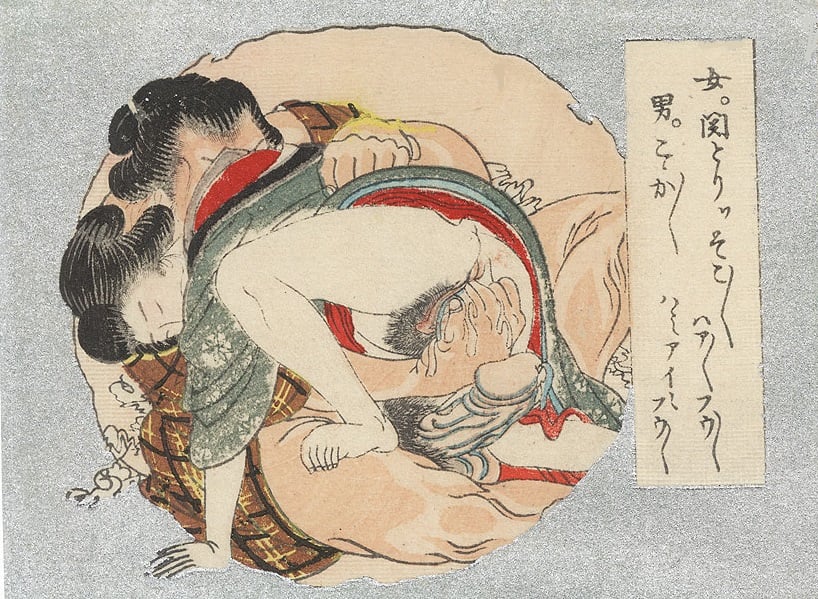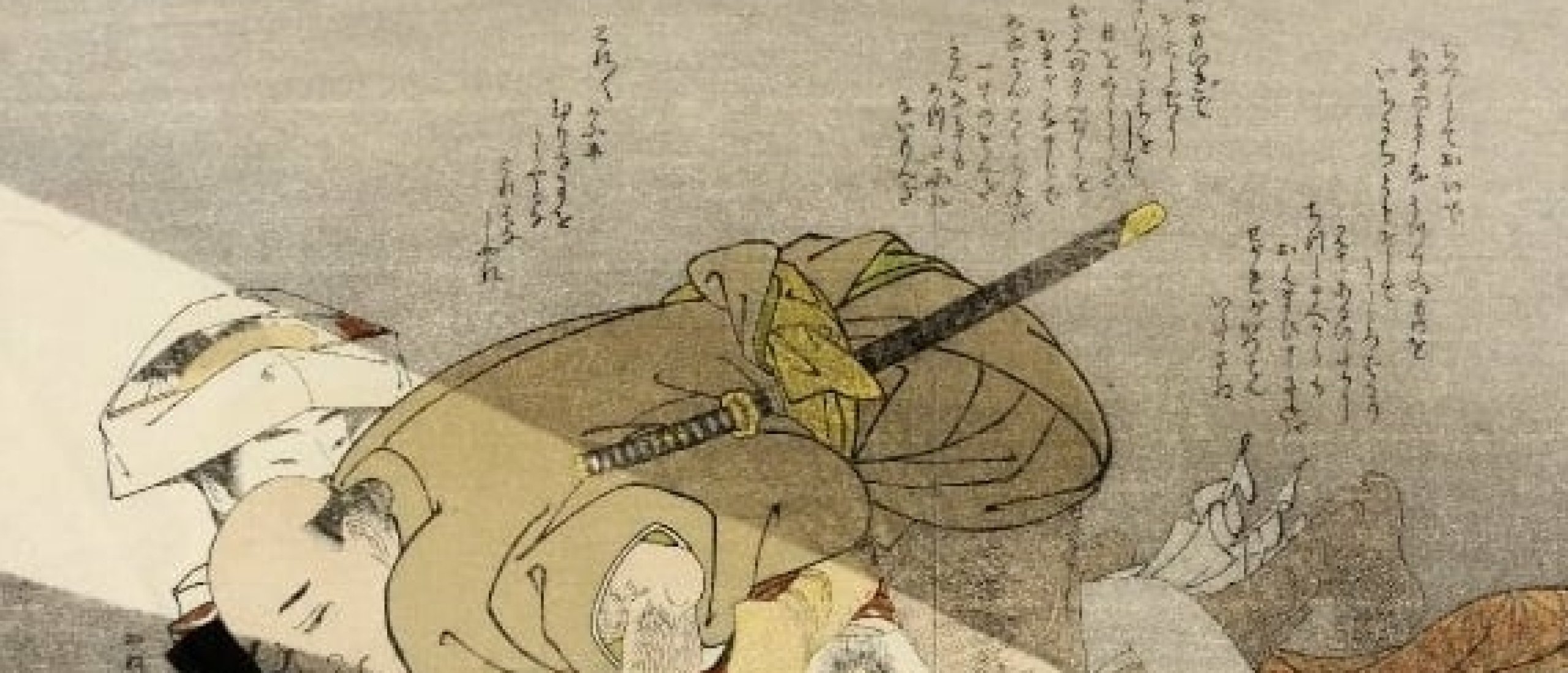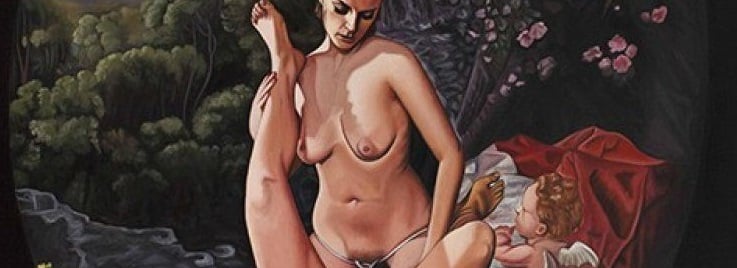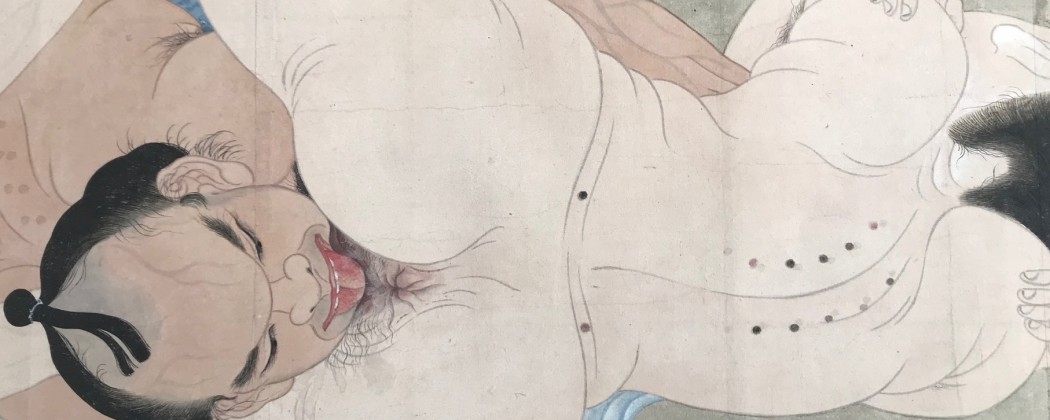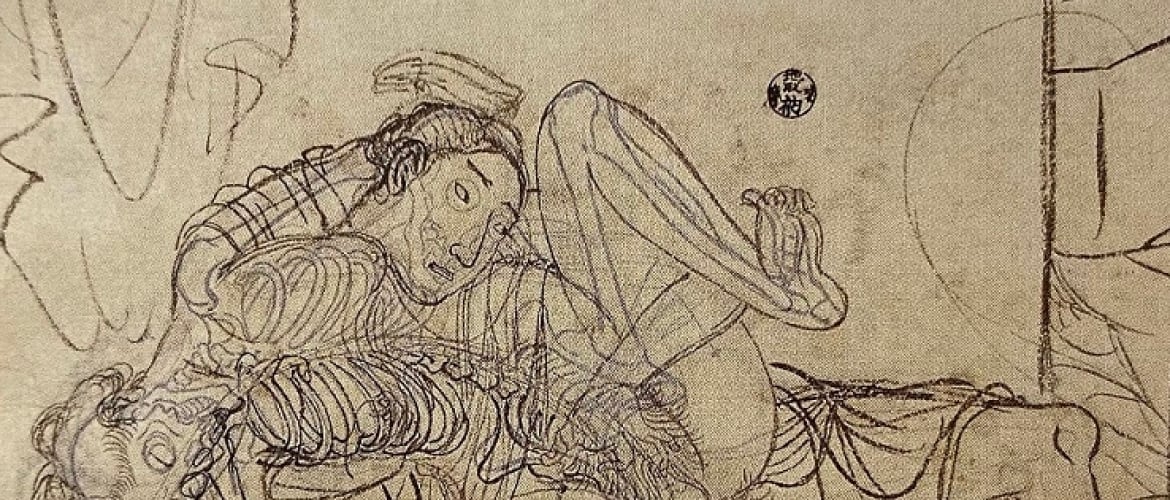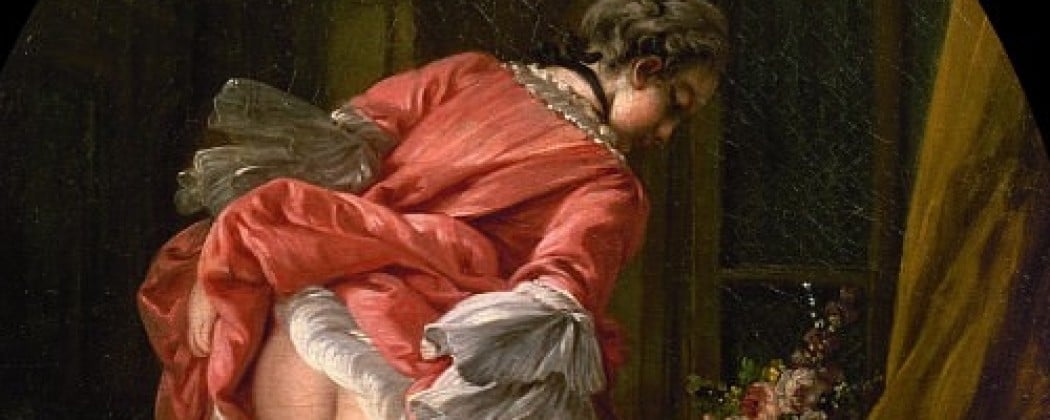
Today we’ll look at several paintings by François Boucher (1703-1770), who was the most eminent exponent of the rococo (‘rocky’) style in Europe. Lots of significant European museums have his colorful pastoral works in their collections.
Savor of Antiquity
Rococo is famous for its’ sensuality and a savor of antiquity. It flourished in Western arts in the 18th century, while Shuncho and Harunobu produced their amazing shunga prints in Japan. The spirit of idyllic pleasure and the attention for mythology make shunga pictures and rococo paintings relatable to each other.
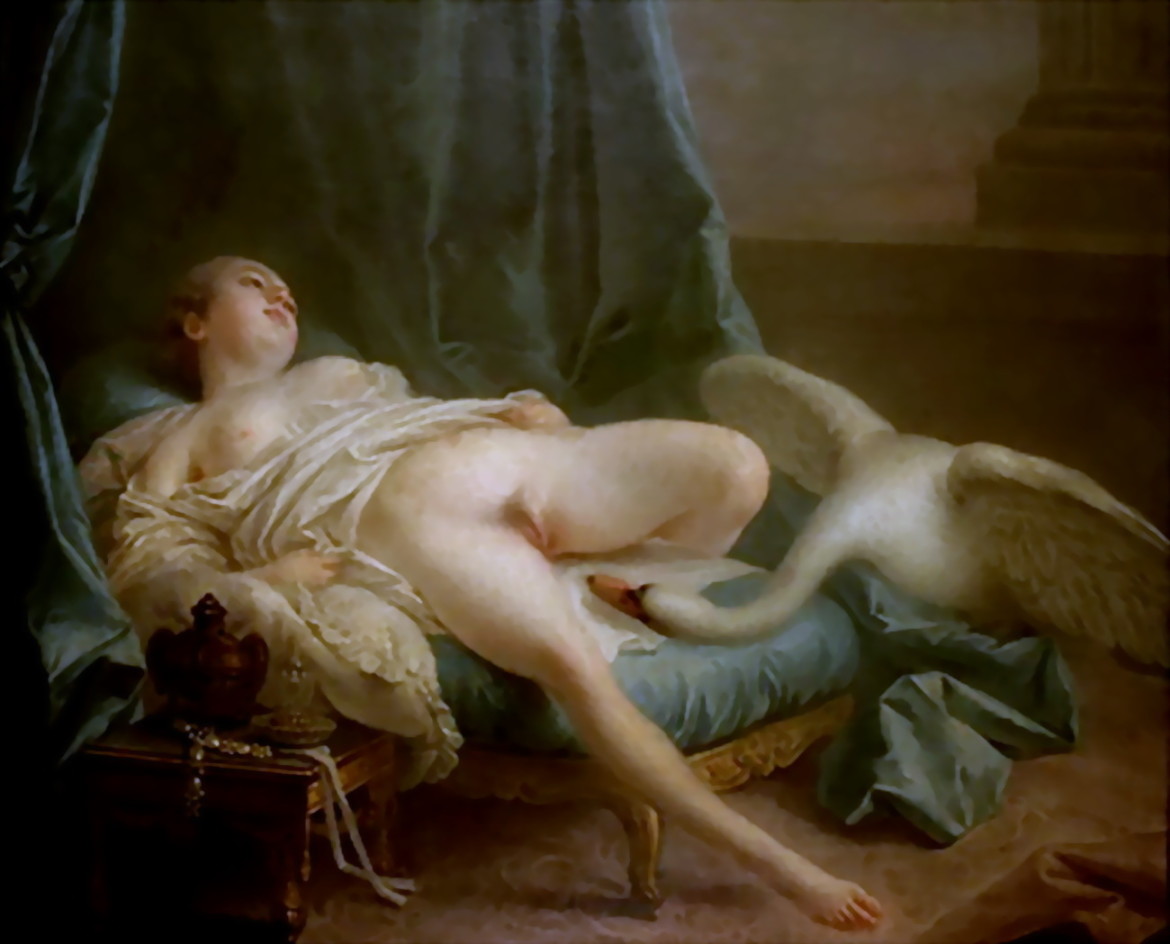
Fig. 1. ‘Leda and the Swan‘, attrib. to Boucher, ca. 1740.
Helen of Troy
The ideologic similarity of shunga and rococo becomes quite evident when we look at this work attributed to Boucher. The plot of this picture is a wide-known Greek myth about the daughter of the Aetolian king Thestius. She was already married to Tyndareus, but her beauty was so outstanding, that Zeus turned himself into a swan to make love with her. After this encounter, Leda laid two eggs from which hatched famous Greek characters, e. g. Helen of Troy.
Swan’s Beak
Due to its’ exposed sensuality, the consummation of Leda and the Swan became a favorite plot in Western art. We can recall paintings by Michelangelo, Veronese, Tintoretto, Boucher, Moreau, Cezanne, Dali, and the work of Boucher still will be the most voluptuous among them. The swan’s beak, reminding a penis, is depicted very close to exposed private parts of Leda.
‘Tentacle’ Works
Interestingly, some of the artists depicted the swan penetrating Leda with a penis, while others considered the beak to be an equivalent of male genitalia.
The extent of explicitness of this painting is comparable to the ‘tentacle‘ works of Shuncho or Hokusai, inspired by Japanese legends.
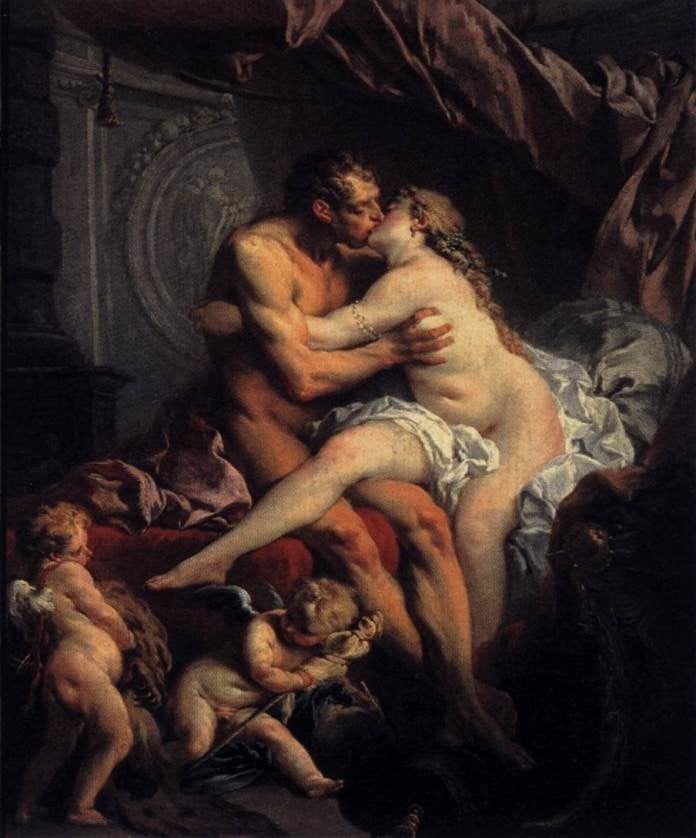
Fig.2. ‘Hercules and Omphale‘ (1734)
Kiss of Hercules
Another quite explicit painting by Boucher shows us a passionate kiss of Hercules and Omphale, queen of Lydia. Hercules was obliged to serve Omphale during a year after the inadvertent murder of his friend Iphitus. The queen forced him to do women’s work and wear female clothes. She used Hercules not as a warrior, but as a lover, and bore several children from him. Two cupids at the lower part of the image is a clue to what is happening in the picture, as one cupid holds a broom and another tries to lift a heavy skin of the Nemean lion, a terrifying beast killed by Hercules.
Omphalism
By the way, the word omphalism is sometimes (very rarely though) used to determine a heterosexual man’s desire to wear female clothing.
The Young Callisto
Boucher used this plot twice: in 1744 and 1759. Jupiter (roman name of Zeus) had a strong desire for a young nymph Callisto, who was a companion of Diana, goddess of the hunt and virginity. To not to be rejected, Jupiter transformed himself into Diana and this way seduced Callisto.
Bear
The outcome was tragic: Diana turned Callisto into a bear after noticing her pregnancy. This plot is unusual enough as it allows showing sexual relations between women. At the same time, remembering the myth, we can regard these paintings as quasi-lesbian.

Fig. 3. Jupiter and Callisto, 1744.
Three Cupids
An earlier painting (fig. 3) is less explicit, and characters’ figures look slim and young, their poses seem more innocent. Three cupids play with a garland of flowers. In both images, Diana/Jupiter wears a hairband decorated with a crescent moon.
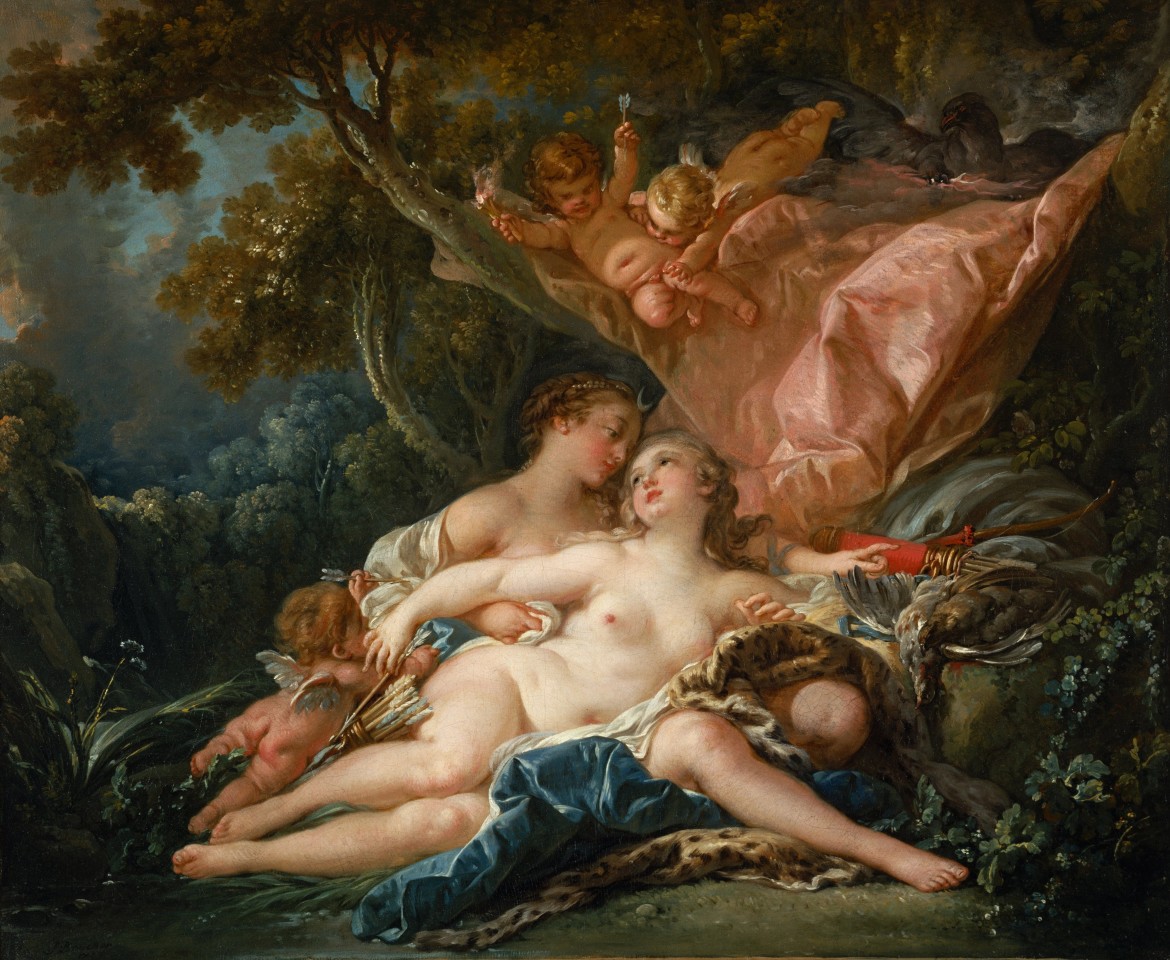
Fig. 4. Jupiter and Callisto, 1759.
Erotic Tension
The painting created fifteen years later (Fig.4) is more voluptuous. Boucher depicted a nude body of Callisto with all its’ curves in a manner close to that of Rubens. Erotic tension is expressed here by the figures of cupids looking too playful, almost aggressive. They try to prick the main characters with their arrows. The poses of the characters point at the soon intimacy.
Below you can see some other works created by Boucher or attributed to him…
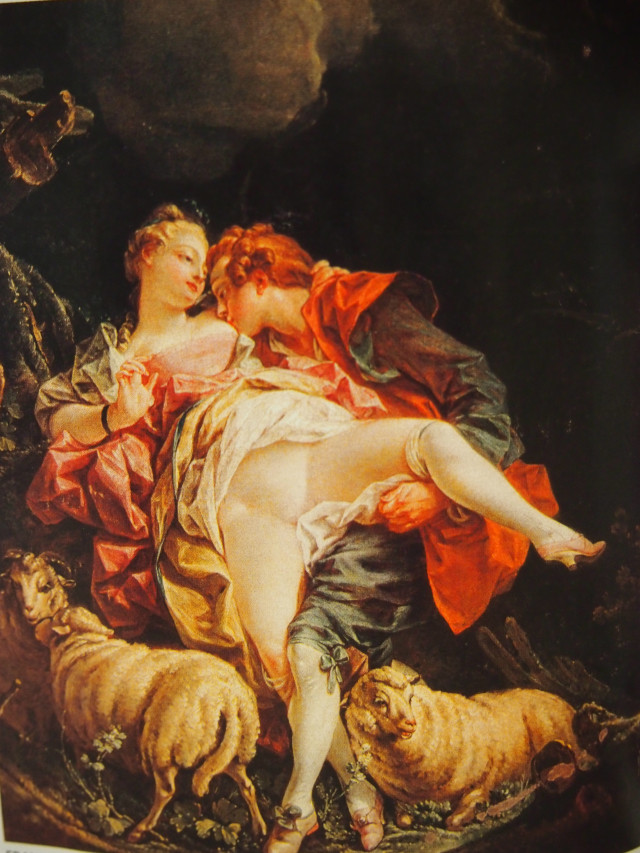
Fig. 5. Copy of a painting attrib. to Boucher (taken from versaillesgossip.wordpress.com)
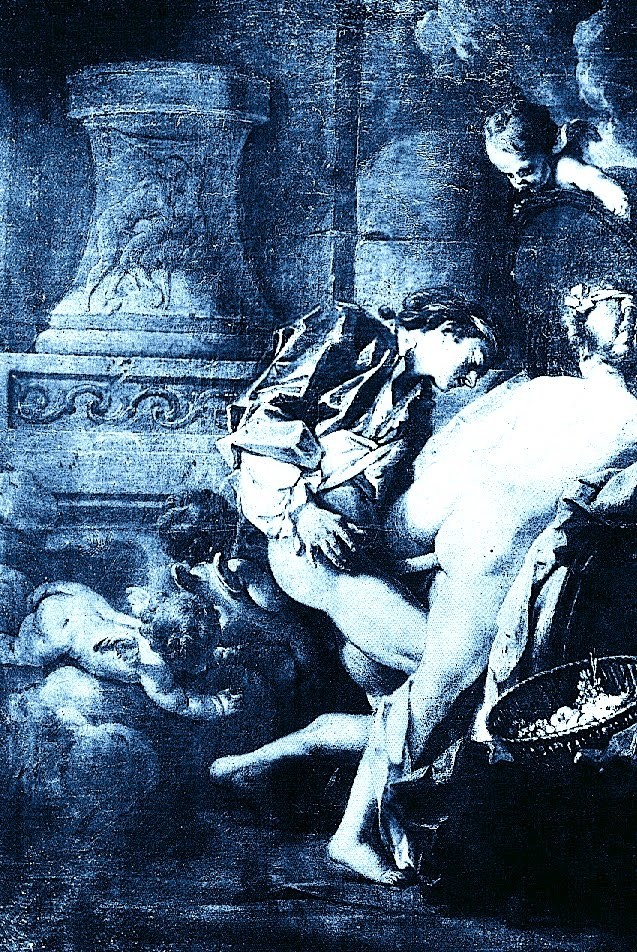
Fig. 6. Attrib. to Boucher (taken from stevieprescott.blogspot.com)

Fig. 7. ‘Odalisque‘, 1740-45, taken from gallerix.ru.
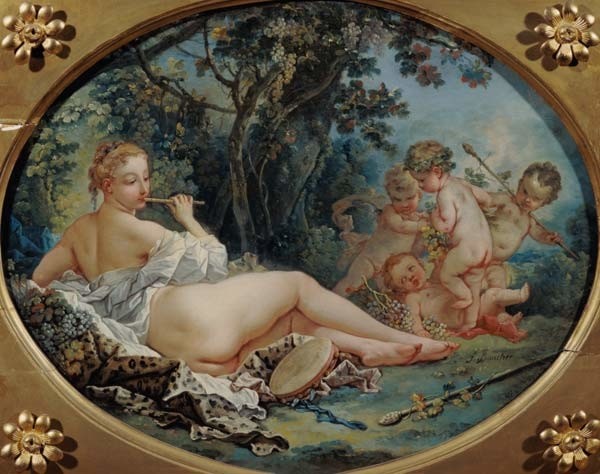
Fig. 8. Bacchante Playing the Flute, 1760s. Taken from kunstkopie.de.
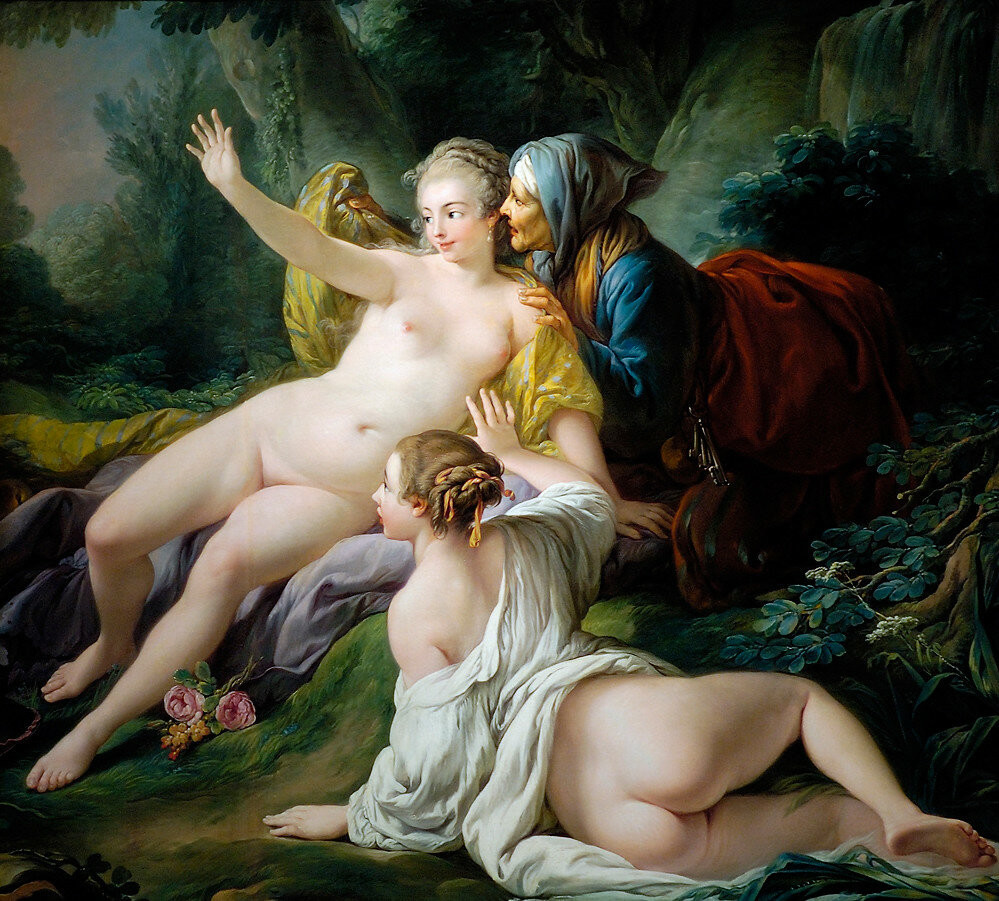
Fig.9. Vertumnus and Pomona, 1740.
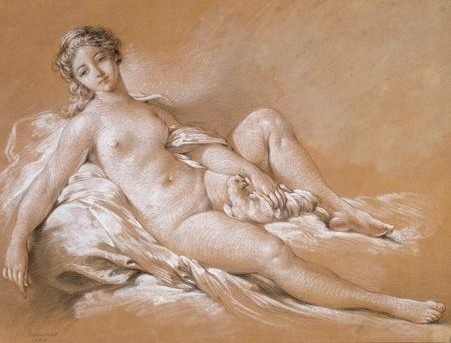
Fig. 10. Venus with a Dove, sketch.
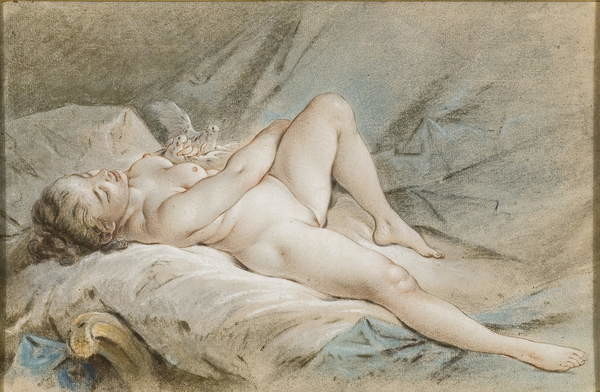
Fig. 11. Venus with Doves, sketch.
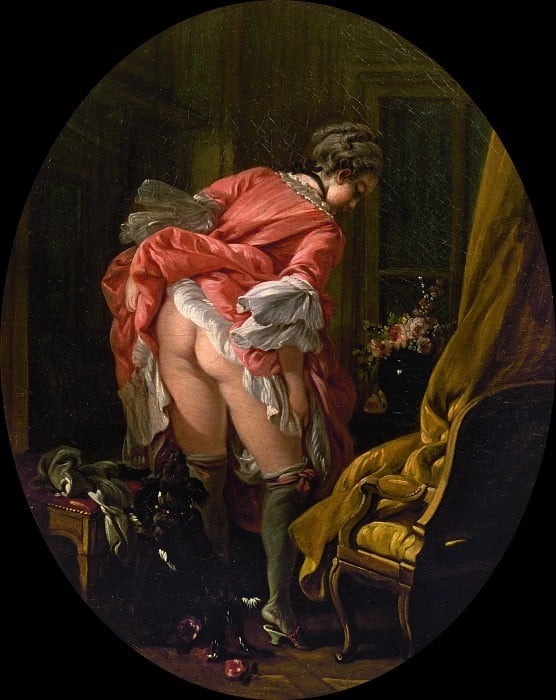
Fig. 12. The Raised Skirt, 1742.
Click HERE for the lesbian art of Sadie Lee inspired by Francois Boucher…!!
What would you recommend us to publish more content about? Leave your advice in the comment box below…!!

